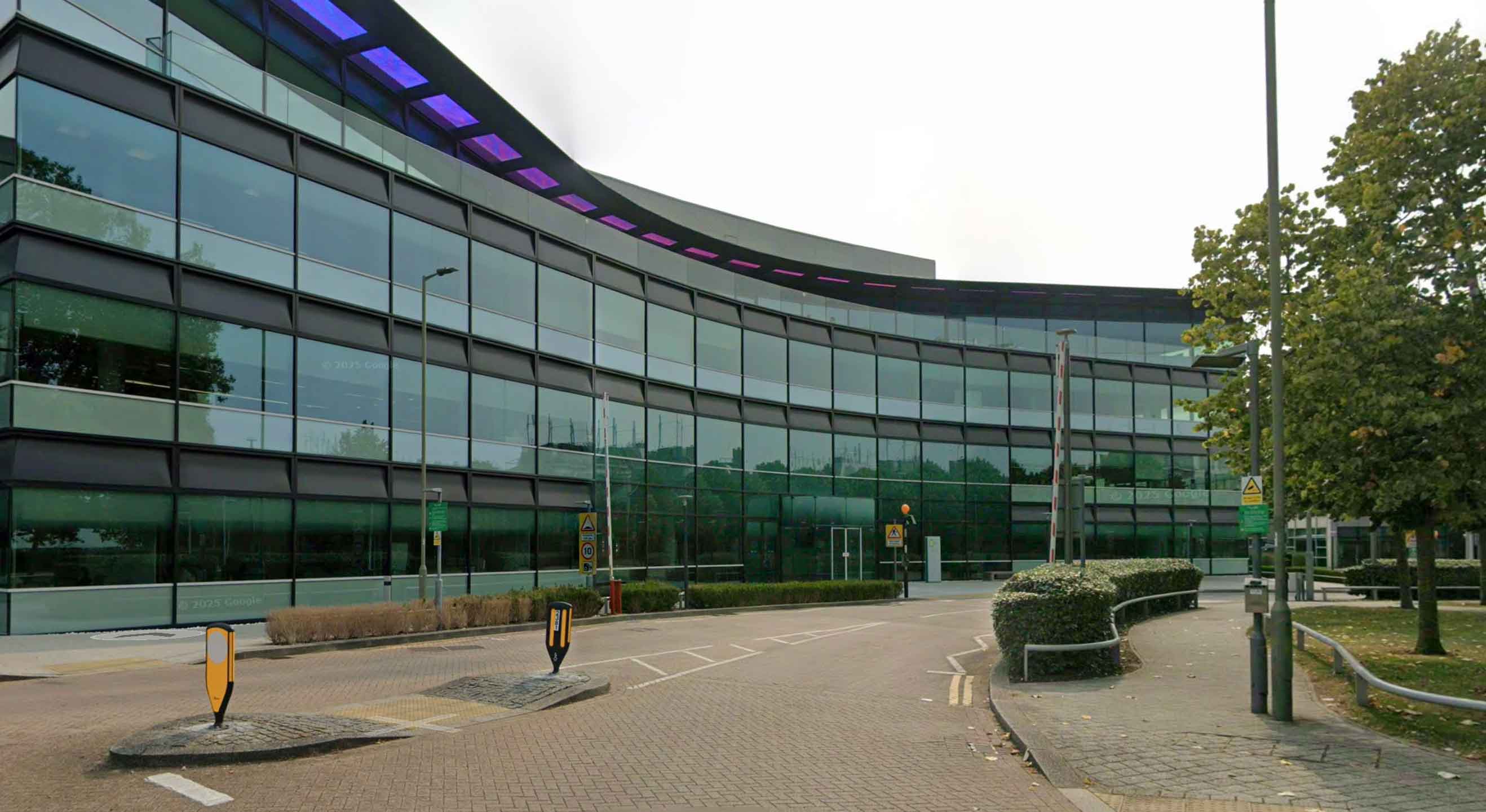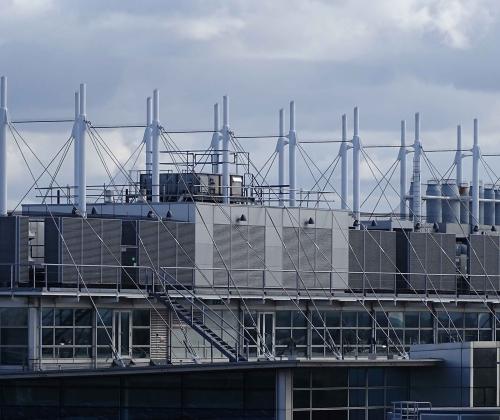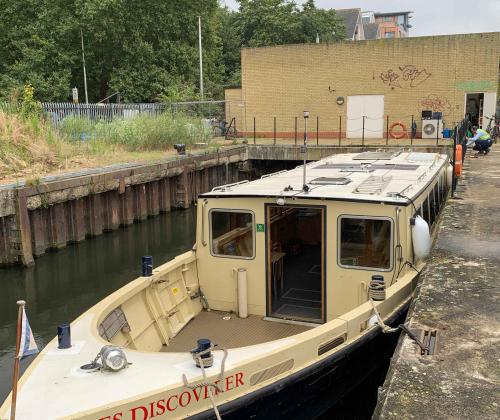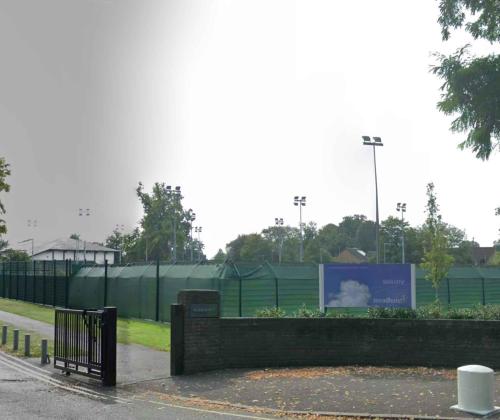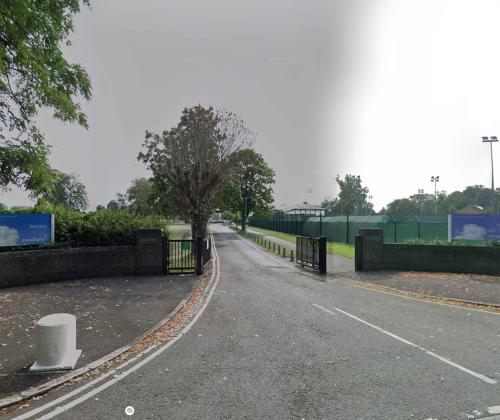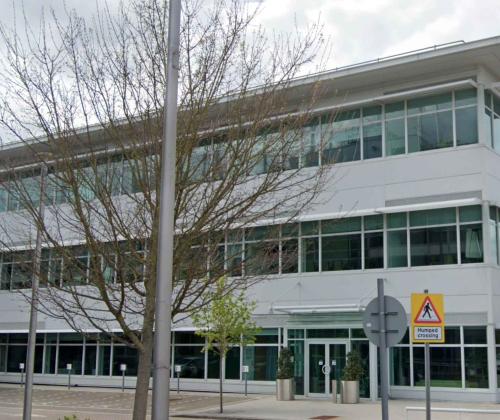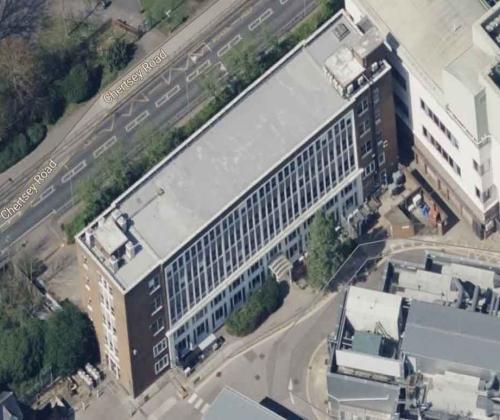Building E Drainage Upgrade Structural Assessment - BP ICBT Sunbury
- Post-tensioned slabs
- Issue: PT tendons are critical to slab performance.
- Impact: Any strike or local tendon cut can trigger sudden capacity loss, significant repair cost, and programme risk.
- Penetration risk near tendons/rebar
- Issue: Proposed pipe penetrations and chases risked clashing with tendons, anchor zones or primary reinforcement.
- Impact: Incorrect positioning could weaken the slab, alter load paths, or induce cracking/deflection.
- Design coordination in a live building
- Issue: Aligning drainage routes with existing structure, services and ceiling zones in an occupied building.
- Impact: Needed buildable details and sequencing that minimised disruption and safeguarded users.
1) Comprehensive structural review
- As-built information: Collated and reviewed structural drawings/specifications to establish PT tendon layout, anchorage zones, slab depths and pour breaks.
- Capacity checks: Assessed the effect of proposed openings on shear, bending and punching capacities, including local edge distances and minimum web widths.
2) Penetration safety rules & “safe-zone” mapping
- Safe zones: Issued penetration-free exclusion zones around ducts and anchorage heads; defined allowable corridors for small cores and sleeves.
- Non-destructive verification: Recommended GPR scanning and cover-meter checks prior to each core to confirm tendon/rebar positions; agreed a permit-to-drill hold-point process.
3) Drainage route optimisation
- Design collaboration: Worked with the M&E engineers to re-route or offset pipe runs where clashes were identified, switching to soffit drops/locally boxed chases or shallower gradients where structurally advantageous.
- Detailing guidance: Issued edge distances, minimum clearances and sleeve diameters; specified no-cut zones near anchor heads and bursting-reinforcement regions.
4) Execution controls & site support
- Method & sequencing: Set out step-by-step drilling controls (pilot hole → GPR re-scan → core in increments), with stop rules if anomalies were detected.
- Quality assurance: Required as-scanned overlays to be marked on the soffit before drilling, engineer sign-off at hold points, and red-line as-builts after works.
- Contingency planning: Defined an emergency response in the unlikely event of a tendon exposure (isolate area, temporary propping, engineer inspection, repair plan).
- Drainage routes integrated without compromising the PT system, with clear safe-zone drawings and hold-point controls for the contractor.
- Reduced risk of tendon strikes through mandatory GPR verification and a permit-to-drill process.
- Constructability maintained in a live building, minimising disruption to occupants and operations.
Structural assessment · PT risk management · Safe-zone mapping · Penetration/route optimisation · Method statements & hold-points · Site support & QA
Expertise in Complex Structural Challenges
- Advanced Engineering Solutions: Skilled in addressing intricate structural issues through innovative engineering practices.
- Innovative Approaches: Utilises cutting-edge technology and methodologies.
Customised Solutions
- Tailored Designs: Solutions crafted to meet the specific needs of each project and client.
- Client Collaboration: Works closely with clients to understand their requirements and achieve desired outcomes.
Commitment to Quality
- Stringent Quality Control: Maintains high standards throughout project execution, from design to commissioning.
- Safety Focused: Prioritises safety in all aspects of design and implementation, adhering to the highest industry standards.
GEM Enterprise specialises in comprehensive structural and civil engineering services. Our experienced team is dedicated to delivering innovative, safe, and efficient solutions for complex engineering challenges. With a commitment to excellence and client satisfaction, we provide services ranging from structural assessments to the design and implementation of bespoke engineering solutions.

